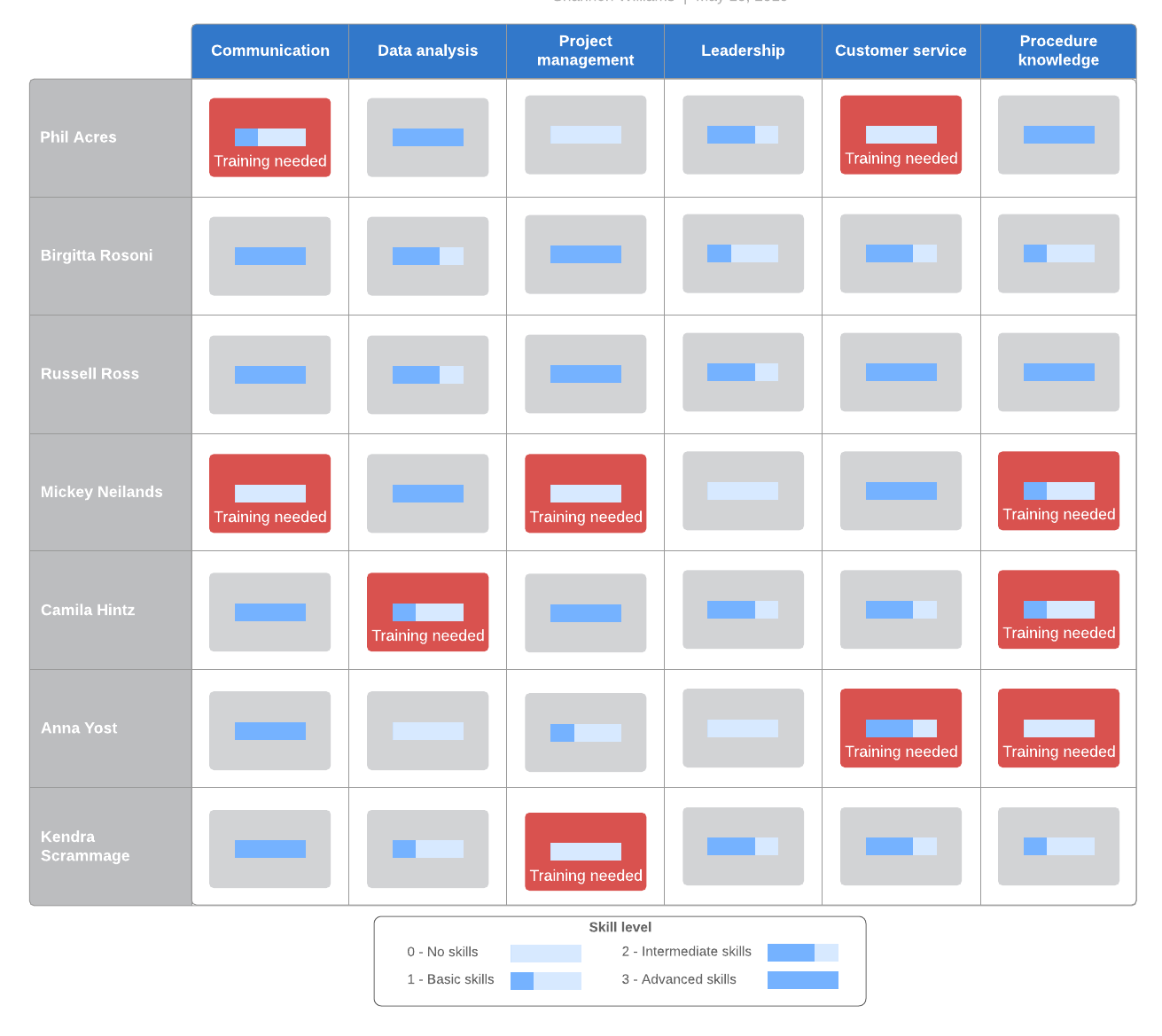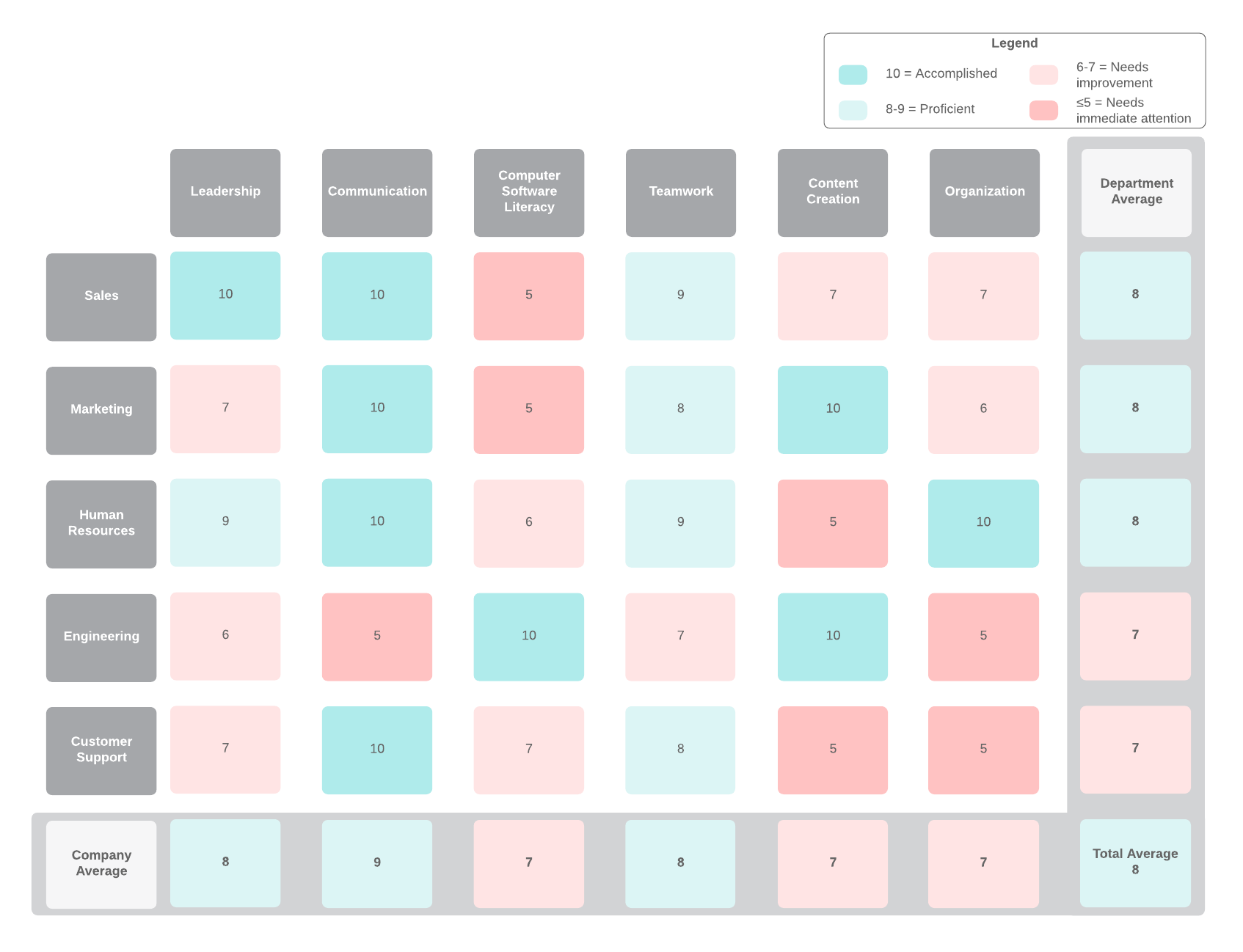
The Importance of Employee Training and Development Programs
Lucid Content
Reading time: about 7 min
Topics:
The one quality that often speaks louder than excellence is improvement. Audiences undoubtedly love and appreciate an award-winning athlete, someone with natural talent and consistent, high-level performance—but think of how they react to the former bench staple who worked relentlessly to surpass the performance of the “naturals.” These players, the “underdogs,” earn just as much, if not more, admiration.
Similarly, businesses should value and support their employees’ continuous improvement and personal development. Many high-performing companies have instituted employee training and development programs in order to turn “underdogs” into eventual leaders.
This article will focus on the value of employee training and development and methods you can implement to improve your company’s performance, at any and every level.
What is employee development and training?
Employee development and training is the process of strategically investing time, energy, and resources into the improvement of company personnel. Above all, employee training and development is about learning: software skills training, workflow refinement, and even job shadowing are common examples of employee training and development.
While the words training and development are often used interchangeably, there are key differences between them that should influence the way company leaders think about performance improvement.
Training refers to teaching an employee new skills to help them improve their job performance and work more efficiently. A few examples of employee training programs might include:
- Company-wide training on using new work management software
- Department training on how to use new machinery to increase productivity
- Individual training on how to bill and invoice clients for a new hire
Development, on the other hand, refers to the improvement of existing skills. A few common ways companies invest in employee development might include:
- Hosting a workshop on interpersonal communication
- Hiring a consultant to address weaknesses in workflow and inter-department communication
- Offering one-on-one mentorship for rising stars and future company leaders
In short, training is specific to internal company goals and processes, while development extends outside of the company and can include general skills like communication, leadership, and project management.
What are the benefits of employee development?
In the competitive world of modern business, smart company leaders must always look for ways to gain an edge. Leadership, capital investment, market share, and product and service offerings are undoubtedly important, but employees are the bedrock and the lifeblood of any organization.
The answer to every business leader’s driving question of "How do we increase performance?" should always resolve to "How do we improve our workforce?" As you consider your HR planning process, keep in mind that a highly trained, highly skilled, and ever-improving workforce is the key ingredient in building a sustainable high-performance business.
Take a look at a few other benefits of employee development.
Attracting and retaining talent
Employee training and development results in more satisfied team members, making it an essential part of the talent management process. Studies show that when employees feel invested, are given opportunities to improve and advance, and feel valued for their unique contribution to a shared mission, they tend to stay with the company longer and even become internal advocates for the company mission.
Growing profits
Underskilled employees cost businesses billions of dollars every year. Redundancies in team responsibilities, liabilities from employee mistakes, and inefficient workflows are the main capital drains of even the most successful companies. Employee training and development programs can help you grow the talent you already have to keep valuable company knowledge and tenure in house, reduce turnover, save on hiring costs, and maximize your profits.
Maximizing performance
The people you hire are already capable of doing their job well—or they wouldn’t have been hired. However, employee training and development programs can offer insight into strengths and weaknesses that weren’t apparent in the hiring process and help bridge any skill gaps to maximize performance. What’s more, employees that are up to speed on the latest skills and technologies will give your company a competitive edge.
Fending off stagnation
Even the most motivated employees can feel burned out or bored in their roles. Training can offer a reprieve from the mundane and help employees breathe new life and new perspectives into their current roles. In turn, those rejuvenated employees will help the business fight off stagnation, too.
Improving productivity and engagement
If employees feel supported and inspired at work, they will naturally become more productive and satisfied with their work. Yet, only about 33% of the US workforce reports being engaged with their work. This lack of engagement can hinder productivity and negatively impact the business. Employee training and development programs can build camaraderie and help employees feel more engaged.
How to effectively implement employee development programs
Now that you’re invested in the future success of your organization and are convinced of the value of employee training and development, it’s vital to understand the methodology behind effective training and development.
Consider these four steps as you learn how to develop employees at your organization.
1. Assess business impact
What is your company’s end goal? Addressing this essential question will help you develop a training and development strategy that, instead of focusing on current goals, structures goals in the form of measurable impact.
2. Evaluate skill gaps
How is employee action speeding up or slowing down your pursuit of company goals? When you can identify the areas where team members’ current skill sets fall short of their desired or most effective skill sets, you can more easily target what your specific educational outcomes should be. You can organize these outcomes into these three groups, and create action plans for all three groups:
- Motivation: How do you help team members internalize the “why” behind the training and development strategy? When employees have a clear understanding of why a strategy is in place, their allegiance to the strategy becomes intrinsic rather than obligatory.
- Skills mastery: What are the most high-impact skills your employees must have to be as effective as possible at their position? These skills and proficiency in them will have the highest impact on overall business performance.
- Critical thinking: What are the most essential qualities and skills to any given position? Knowing the answer to that question will filter training or development into the purest, most effective elements, eliminating superfluous and unnecessary “nice to know” information.
You can also develop a competency framework or use one of the templates below to assess your employees' current skills and determine where they need to improve if you want to take your business to the next level.


3. Layer learning methods
Because our brains have a tendency to compartmentalize information for faster problem solving, implementing a layered training and development strategy plugs in key information to multiple parts of the brain. In the education world, this layered learning methodology is called synthesis—building a structure or pattern from multiple diverse elements—and is the most effective method of lasting comprehension.
4. Assess efficacy and sustain gains
This is where professional advancement requires the most nurturing. Training a new employee doesn’t mean that the information or skills stick—or that they last. Training in and of itself is incomplete: Part of developing new skills is revisiting after a training, evaluating the effectiveness of the training course in producing desired skills, and evaluating the effectiveness of those desired skills in producing lasting desired outcomes.
RELATED: Use the Kirkpatrick Evaluation Model to measure the effectiveness of your training.
Whether dealing with an entire company, an internal department, or an individual, training and development has significant effects on talent retention, profit growth, and overall company sustainability. Fine tuning performance is the top goal of any business’s leadership, and focusing on the development of employee’s pays massive dividends—in revenue, but more importantly, in impact.
About Lucidchart
Lucidchart, a cloud-based intelligent diagramming application, is a core component of Lucid Software's Visual Collaboration Suite. This intuitive, cloud-based solution empowers teams to collaborate in real-time to build flowcharts, mockups, UML diagrams, customer journey maps, and more. Lucidchart propels teams forward to build the future faster. Lucid is proud to serve top businesses around the world, including customers such as Google, GE, and NBC Universal, and 99% of the Fortune 500. Lucid partners with industry leaders, including Google, Atlassian, and Microsoft. Since its founding, Lucid has received numerous awards for its products, business, and workplace culture. For more information, visit lucidchart.com.
Related articles
How to develop a competency framework
A competency framework can help your company define the skills, knowledge, and characteristics required from members of your organization, plus it will help your employees grow in their jobs. Learn how to create a competency framework now.
How to Build On-the-Job Training Programs in 3 Steps
Over half of employees leaving companies report that a lack of training contributed to their departure. Follow these steps to determine which on-the-job training methods are best suited for your organization and to create a training plan for employees.
